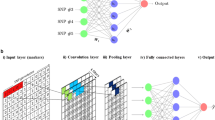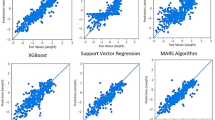Abstract
The paper recounts the investigation of a dairy sire prediction capability based on Cascade Correlation neural networks to study influences relating the performance of offspring to their parents. The context of the problem is the artificial insemination breeding program for the Australian dairy industry. The networks are used to screen observed information in the database to relate it to best combinations of dam and sire. The voluminous data is quite noisy and is subject to genetic and environmental influences. The intention is to extract linear and nonlinear relationships from among the input variables without specifying their form. A number of scenarios are employed which recast the data into different forms. In particular, it was discovered that the problem could be restructured and the data supplemented with transformed data to produce succinct input patterns of manageable dimensionality, which allowed for a substantially improved predictive capability. It was then found that reasonable daughter predictions could be obtained of about 10%, as measured by her milk production. Results are compared with those obtained using two alternate neural network methods. Crude statistical methods are employed to evaluate the performance of the neural networks.
Access this article
We’re sorry, something doesn't seem to be working properly.
Please try refreshing the page. If that doesn't work, please contact support so we can address the problem.
Similar content being viewed by others
Explore related subjects
Discover the latest articles, news and stories from top researchers in related subjects.References
Australian Breeding Value sire assessments for dairy sires used in Australia, Australian Dairy Herd Improvement Scheme Pty Ltd, Victoria, Australia, 1990
Henderson CR.Applications of Linear Models in Animal Breeding. University of Guelph, 1984
Fahlman SE, Lebiere C.The cascaded-correlation learning architecture. In:Advances in Neural Information Processing Systems II, DS Touretzky, editor. Morgan Kaufmann, San Mateo, CA, 1990, 525–532
Geva S, Malmstrom K, SitteJ. LOCLNNET Release 1.0 User Manual. Available at ftp.qut.edu.au
Friedman JH, Stuetzle W.Projection pursuit regression. American Statistical Association 1981; 76 (376): 817–823
Hwang JN, Lay SR, Maechler M, Martin D, Schimert J.Regression modeling in back-propagation and projection pursuit learning. IEEE Trans Neural Networks 1994; 5(3): 342–353
Wade KM, Lacroix R.The role of artificial neural networks in animal breeding. In: Proc 5th World Congress Genetics Applied to Livestock Production, Guelph, Canada, Vol 22, 31–34, 1994
Lacroix R, Wade KM, Kok R, Hayes JF.Predicting 305-day milk, fat and protein production with an artificial neural network. In: Proc 3rd Int Dairy Housing Conf: Dairy Systems for the 21st Century, Orlando, FL, 201–208, 1994
Author information
Authors and Affiliations
Rights and permissions
About this article
Cite this article
Finn, G.D., Lister, R., Szabo, T. et al. Neural networks applied to a large biological database to analyse dairy breeding patterns. Neural Comput & Applic 4, 237–253 (1996). https://doi.org/10.1007/BF01413822
Issue Date:
DOI: https://doi.org/10.1007/BF01413822




